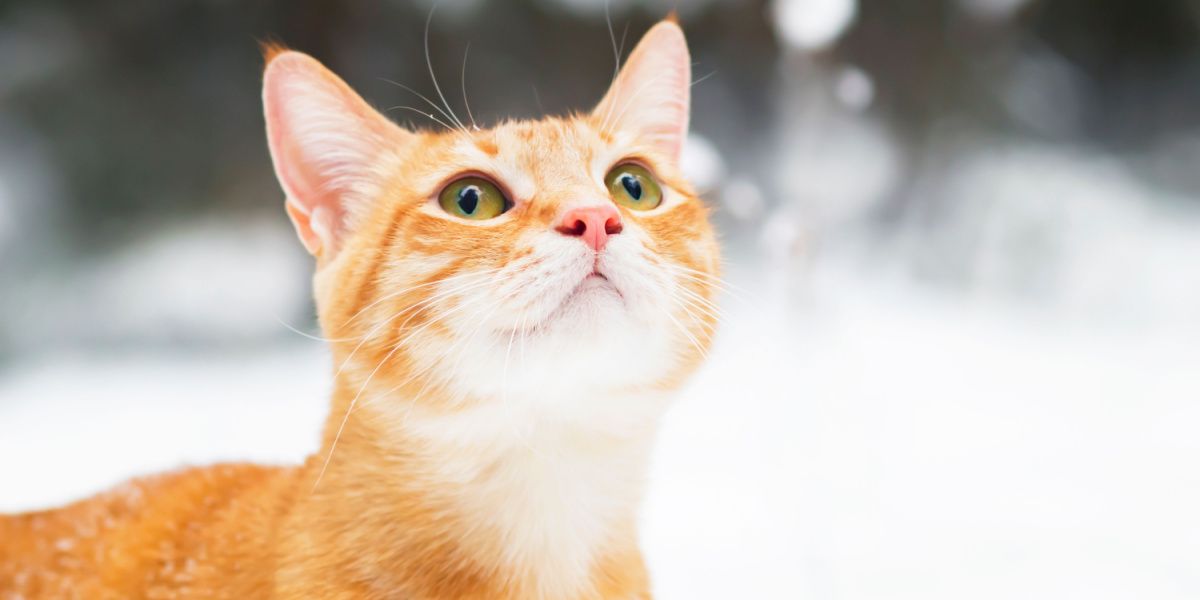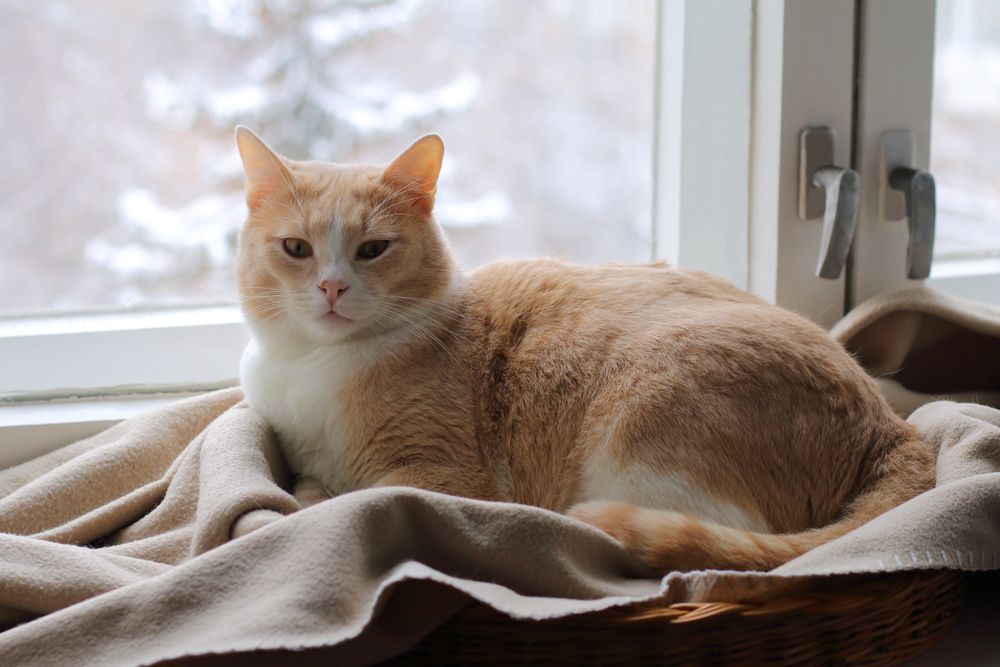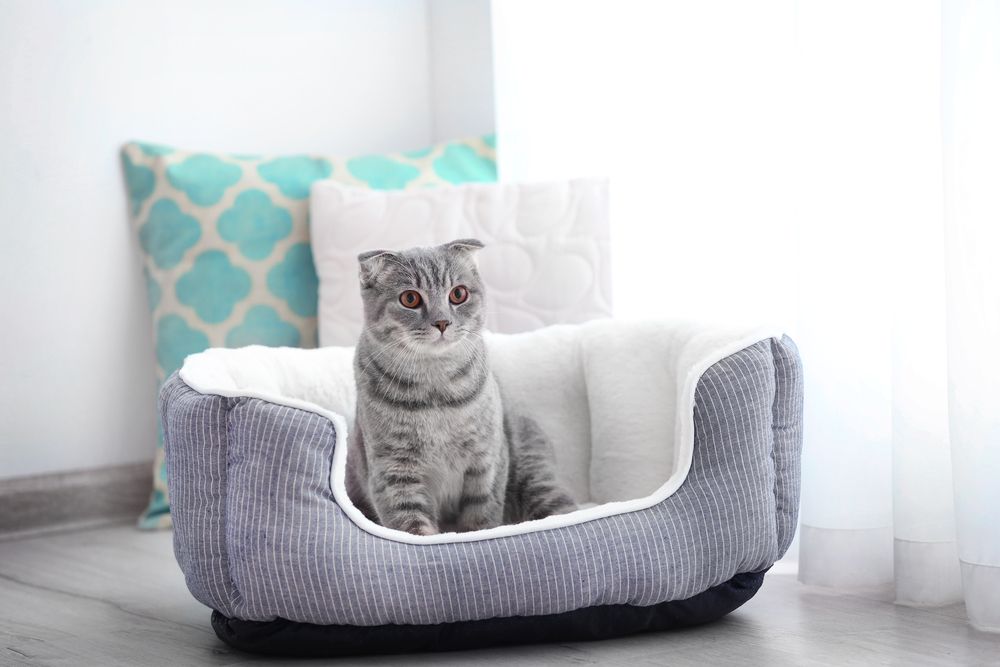
Some cats live solely indoors and never have to contend with extremes of weather conditions. If they are too warm, they spread out and move away from that sunny windowsill or the radiator. If they are too cold, they will soon find a cozy lap to curl up in or seek out warmth in a bed with a snoring human to snuggle up to.
Cats are vulnerable to the elements and extremes of temperature when they are outside.
Cats can become seriously ill and even die if they are exposed to very cold or freezing temperatures.
There are lots of ways to prevent cats from suffering in cold conditions, whether they are indoor or outdoor pets.Key Takeaways
Outdoor cats have to work a bit harder to maintain a comfortable temperature. Luckily, nature is on their side. Cats that frequently spend time outdoors adapt to their surroundings by growing a thicker coat. Cats are also pretty smart and they learn nifty ways to keep themselves warm.
Clever felines who spend time outdoors will learn all the best places to hunt, the best spots for picking up free food from neighbors, and will make it their business to find the cosiest nooks and crannies to sleep in. There are many ways we can help cats living full-time or part-time outside in the colder months. Extra food, special cat shelters, and fresh water that isn’t below frozen are all good places to start.
Cats & Cold Weather: How Long cats Can Be Outside
How well your cat handles cold temperatures depends on how well adapted they are to their environment. Cats who spend a lot of time outdoors will be better equipped than a house cat that rarely ventures outside. Therefore some cats will feel the cold more easily than others.
Even the hardiest of outdoor cats will suffer from extremely cold temperatures, and they will either come home if it is getting too cold for them or find a warm refuge for the night if they are stuck outdoors. Indoor cats can also get cold, but it is easier for them to move to a warmer location: they usually have more options and there is less stress involved.
Your cat’s weight can influence how well they cope in the cold. If they have more body fat, they will cope better in colder temperatures, however, if they are outside, there are more potential dangers and they are likely to be less agile if they are carrying excess weight so may not be able to protect themselves or escape.
Your cat is at a big disadvantage if they have a thinner coat. Cats with no hair such as Sphynx cats, or cats that have been groomed or had their fur clipped should not be allowed to venture out in cold weather. The fur in cats’ coats will help to insulate the heat. However, it only works when it is dry. Rain, snow, or sleet will soak their coat and prevent it from trapping heat in. So it is important to always consider the weather when you are letting your cat out.
If your cat is a young kitten, old, or suffering from an illness, this will also affect their ability to cope with cold weather.
The Dangers of Cold Weather for Cats
Hypothermia
The main danger for cats when the temperature reduces is the risk of developing hypothermia. Hypothermia occurs when your cat’s body temperature drops to an extremely low level. Symptoms of hypothermia include:
This is a medical emergency, so if you are concerned your cat may have hypothermia, contact your vet immediately.
Frostbite in Cats
Frostbite occurs when very low temperatures affect the body’s extremities – the cat’s paws, tail, and ear tips. Blood supply is compromised in these areas leading to tissue death. It can be very serious, resulting in loss of parts of the body.
How Cold Is Too Cold for Cats?

Pet cats should be kept inside if outside temperatures are dropping towards freezing point.
This is a difficult question as it will depend on lots of factors including health status, breed, age, coat condition, and types of weather the cat is exposed to. In general, if it is too cold for humans outside, it is too cold for cats.
A cat’s normal temperature is usually between 100.5 and 102.5 degrees Fahrenheit. The temperature of their environment will affect the cats’ body heat. If the outside temperature is below around 45 degrees Fahrenheit (around 7 degrees Celsius), this is the temperature we start to get worried for cats. If the temperature drops below freezing point, the risk of hypothermia greatly increases.
How To Tell if a Cat Is Too Cold
If a cat is too cold there are certain telltale signs to look out for.
- Shivering
- Curling themselves up and tucking their paws under their body
- Seeking out warmer spots
- Restlessness
- Lethargy, sleeping more to conserve body heat
- Changes to appetite
- Ears and paws might feel cold to touch
If a cat is left in cold conditions for a prolonged amount of time, they will eventually develop hypothermia. Signs of hypothermia to look out for include:
- Confusion
- Breathing difficulties
- Muscle Stiffness
- Dilated pupils
- Pale gums
- Lethargy
- Collapse/coma
The Dangers of Antifreeze for Cats
Antifreeze is used in all cars, in wiper fluid, de-icers, and car radiators. It is extremely toxic to cats. Antifreeze contains ethylene glycol which can cause death if ingested by cats.
Try to avoid using products that contain ethylene glycol, or keep them well away from your pets. It is important to keep bottles of antifreeze tidied away somewhere inaccessible for your cat. If your car is leaking any fluid, always get it seen as soon as possible and clean up any leakages on the ground. Cats can be poisoned by simply walking through a small puddle and then licking their paws.
How to Care for Cats in Cold Weather

Cats love warm, cosy beds, situated away from drafty windows or doors.
There are a few really helpful things you can do when the temperature drops to prevent your own cats from suffering in cold conditions. If you own cats, limit their time outside or keep them indoors completely in cold periods. If your cat has no hair, such as Sphynx breeds, you can put jumpers on them if they will tolerate it.
Ensure your cat has lots of indoor litter trays in different locations they can choose to use so they do not have to go outside for the toilet. If your cat is still going outdoors, ensure they have somewhere warm and dry to retreat to when they come in and check their paws and ears to see if they are excessively cold. Make sure you have warm fleecy beds or blankets for them to lie on and ensure your house is a warm temperature too.
If you want to care for stray or feral cats in your neighborhood, there are a few things you can do.
Put out a regular fresh supply of high-calorie cat food available for them and check fresh water sources frequently. Ensure the water does not freeze and keep refreshing it.
Build an outdoor cat shelter for strays to sleep in. This can simply be a large container box on its side, a dog kennel, or something fashioned out of wood if you are crafty. Put the shelter in a safe and sheltered place, away from potential predators.
You can place bedding such as a blanket or a towel in the shelter but you must check it regularly: if it gets any moisture on it, it will not help to warm the cat, quite the opposite. Straw or hay can be changed easily when it is damp. You can put a heating pad in, but always make sure it is covered properly to ensure it does not burn the cat if they lie on it.
You can allow access to a warm garage or porch if it is safe to do so. This way the cat can come and go as it pleases and feel safe and secure when they sleep.
Also Read: How To Catch a Cat With a Towel
Conclusion
Cold weather can be dangerous for cats. Cats often lead very independent lives so it is easy to assume they will survive cold weather. Cats are just as vulnerable to a cold snap as any other animal and they do often need help surviving the chillier winter months.
If you have a cat that goes outside, they need to be monitored closely to ensure they are safe when they go out in the cold. Stray cats will benefit from extra sources of food they don’t have to expend energy hunting, fresh water that hasn’t frozen over, and shelters to sleep in.
Frequently Asked Questions
Can cats catch a cold?
It is fairly easy for cats to 'catch' a cold. This means picking up a viral infection such as cat flu from another cat. Cats with cat flu will display cold-like symptoms humans are familiar with such as sneezing, coughing, watery eyes, and nasal discharge. Having a cold or the flu is an infectious disease and it has nothing to do with being outside in low temperatures.
Is a cold house bad for cats?
If your cat is living in a cold house this can cause health issues if their temperature is consistently lower than it should be. They will need to use energy to keep themselves warm and it can cause stress on their body and lead to their immune system not functioning as well as it should do.
Can cold weather kill cats?
Unfortunately, extremes of weather conditions such as cold weather can cause death in cats if they get severe frostbite and hypothermia.
-
https://cats.com/antifreeze-poisoning-in-cats
-
https://cats.com/cat-body-temperature








My outside cat is just laying around. She’s got a warm bed and is in a box with blankets around her bed/ She has been an outdoor cat all her life. This wointer, my husband has started putting her in an outdoor building with heat. She is now not active like she was prior to winter Should she be left outside since she’s been there since nirth? She has never lied indoors.